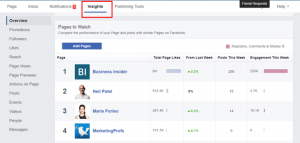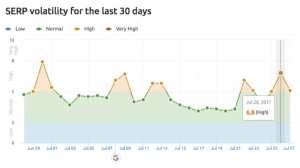Google recently announced that it’s changing its search algorithm and it has major implications for businesses of all sizes. As more than half of Google searches now come from mobile devices, think smartphones and tablets, ranking mobile content has become increasingly important in the search engine world. In an effort to more accurately rank web pages, Google’s algorithm will start prioritizing mobile content in its search results. The rationale for transitioning to this mobile-first ranking is that:
“Algorithms will eventually primarily use the mobile version of a site’s content to rank pages from that site, to understand structured data, and to show snippets from those pages in our results.”
Right now, Google is testing this ranking methodology, but hopes to slowly roll out this revised algorithm in the near future.
So what does this mean for small businesses? Now is the time to prepare for these imminent changes. With preparation and a few changes to your website, you’ll ensure your business website receives the search results it deserves and is not excluded from searches because the site lacks optimization.
Responsive or Dynamic Websites
First and foremost, if your site is responsive or dynamic, you’re in the clear. You don’t need to adjust anything as your content is already mobile-friendly and can be crawled by Google’s algorithm. If you created a website with our latest website builder, your site is automatically formatted as responsive. Your only job is to consistently update the site’s content to fully engage your viewers on a ongoing basis.
Desktop-only Websites
If your website is formatted for desktop-only, you don’t have to change anything, per se. Google can still index your site, but you won’t reap the benefits of the mobile-friendly boost ranking. What is mobile-friendly boost ranking, you ask? It’s basically a rankings incentive program that encourages websites to be mobile optimized. This is a bonus for Google because the content is viewable and compliant on mobile devices as well as desktops, so it can more accurately rank and assess the site’s content for search results. It’s a huge advantage for small businesses as it guarantees a rankings boost within Google’s results pages. In this increasingly digital age, it’s in your best interest to optimize for desktop and mobile so your business website can have the most relevant and comprehensive reach possible.
Mobile-friendly Websites
Unsure if your site is mobile optimized? Use Google’s Mobile-Friendly Test to see how your website looks on mobile devices. If the experience is less than desirable, such as skewed images or the page doesn’t fit on your screen, it’s time to make some changes. Here are the three major considerations to make before Google fully implements its new algorithm.
- Don’t ditch your desktop site in lieu of a mobile-only site! In fact, a highly functioning desktop site is much better for search results than a mediocre mobile-optimized website. If you’re uncomfortable with mobile formatting, try a website builder that automatically includes mobile-ready versions.
- Adjust the formatting on your website so that it is compliant with mobile standards. This means tweaking the size of images and the amount of text per page.
- Review your site’s hierarchical structure. Having a consistent website structure across desktop and mobile formats will yield the greatest search results success for your site. This means your menu and basic pathways to specific pages should be identical on your desktop site and mobile-friendly site.
These key changes will ensure your website’s ranking is as strong as high as possible. In a world where online search plays a significant role in a buyer’s decision, your business website needs to be easily accessible both to its potential customers and algorithms. Give your business every SEO advantage conceivable and make the first impression your business deserves by getting ahead of the Google-wide algorithm change.
Digital & Social Articles on Business 2 Community(50)




